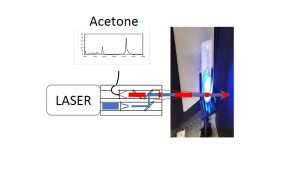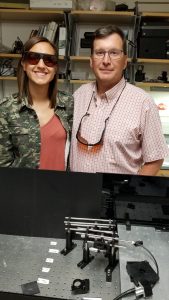Methods to detect hazardous or illicit materials accurately, rapidly, and at discreet distances, are needed for public safety. Monitoring mass transit facilities and luggage, the delivery of packages and letters, and participants at large scale events, without interfering with the progress of these normal operations is difficult. Unfortunately this difficulty is being exploited by those with bad intent. Our military personnel, first-responders, and homeland security officers need transformative technologies to protect themselves and us from these ever-present dangers.
Among the most promising technologies poised to address this critical detection need is a laser based technology called Raman spectroscopy. This technology requires no sample preparation and does not damage the sample. In addition, Raman has the potential to identify chemicals rapidly and from distances far enough to keep the operator safe. These properties are very advantageous for in-field applications. For example, chemical signatures of explosives can be detected on letters and packages or luggage while sorting or on roadways from military vehicles in real time.

The main challenges associated with Raman spectroscopy are the relatively weak signals and intense background signals from competing fluorescence. Intense laser pulses at 213 and 266 nm are used along with gated detection to mitigate the appearance of fluorescence in the spectral region being observed. Unfortunately, samples that absorb at these wavelengths also pose a significant challenge. Laser penetration depth into these samples is limited and the scattered light emanating from them is also absorbed reducing signals further. This experiment aims to solve this problem by manipulating the spot size of the laser on the sample. The hypothesis is that a larger spot size allows more molecules to scatter and fewer to absorb on the surface by while not needing deep penetration into the sample. This arrangement also negates the need for precise alignment, further proving itself as a viable in-field instrument. Comparison studies using both 213 nm and 266 nm laser wavelengths are aimed at observing Raman scatter from one or both wavelengths. A future goal will include the ability to take both of these spectra simultaneously.